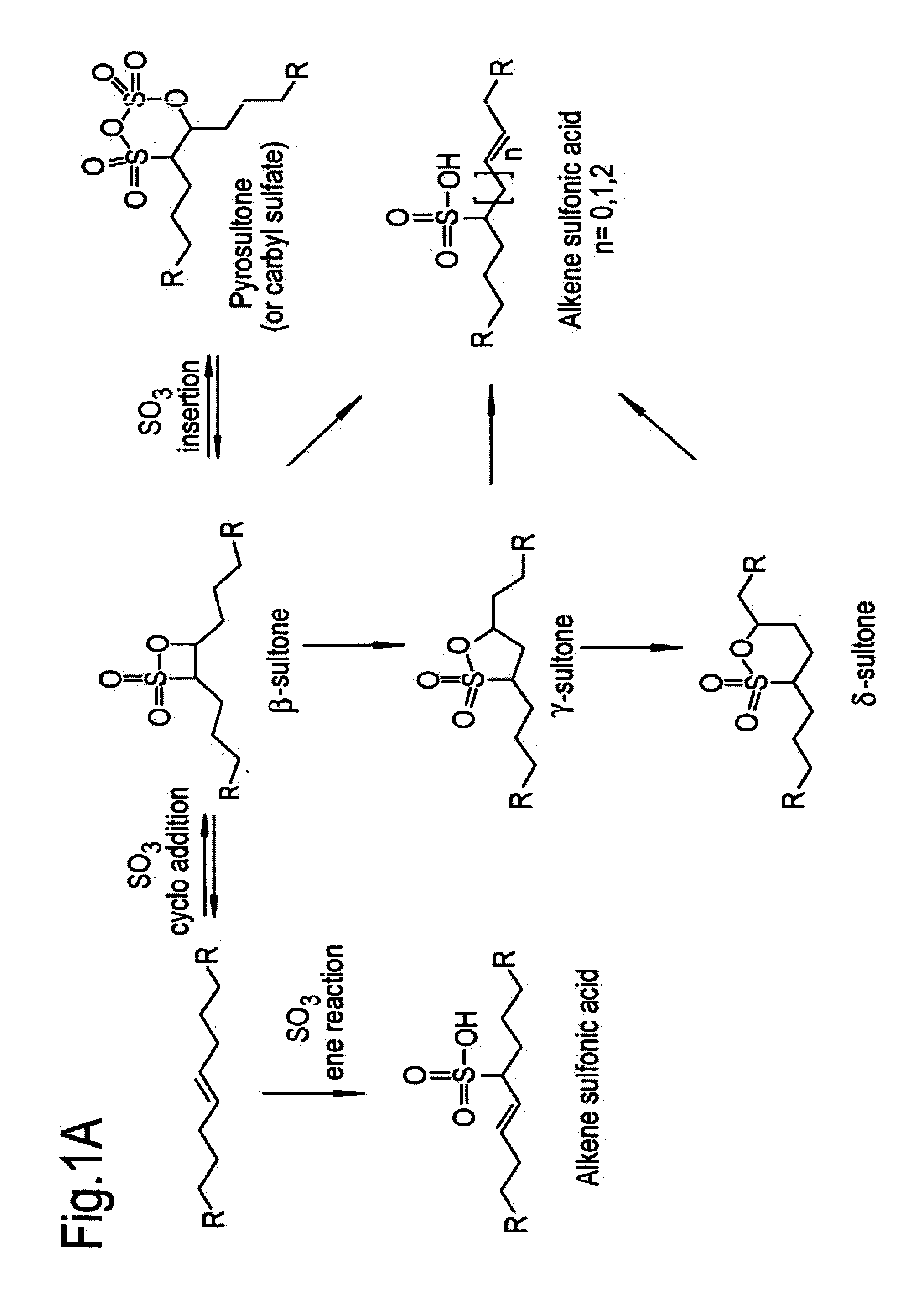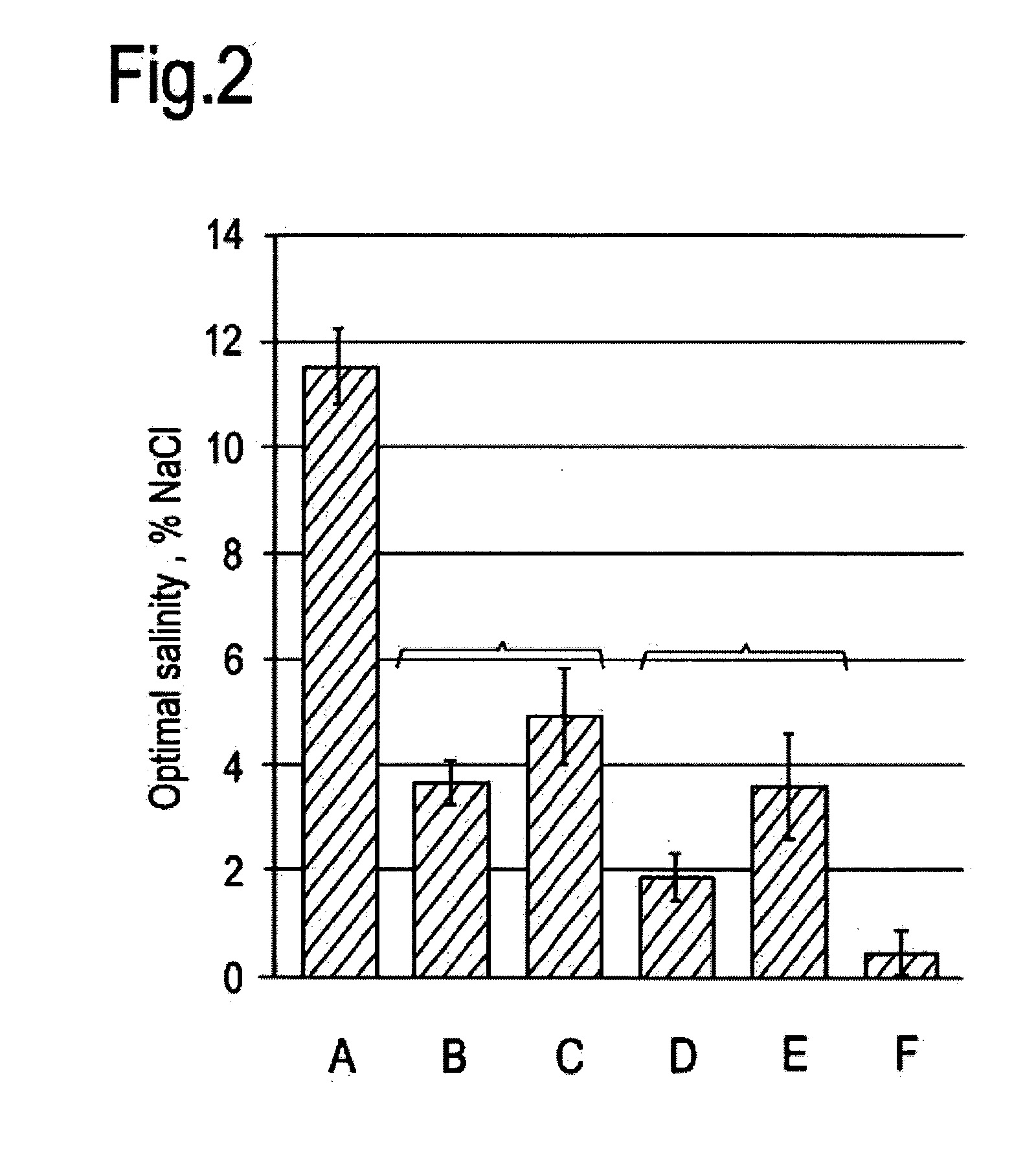Method and composition for enhanced oil recovery
a technology of hydrocarbon recovery and composition, applied in the direction of thickeners, sealing/packing, borehole/well accessories, etc., can solve the problems of insufficient brine solubility and divalent ion tolerance under certain reservoir conditions, disadvantages of individual use, and relatively severe salinity and hardness conditions, etc., to achieve enhanced oil recovery, improve recovery, and beneficial properties
- Summary
- Abstract
- Description
- Claims
- Application Information
AI Technical Summary
Benefits of technology
Problems solved by technology
Method used
Image
Examples
example 1
1.1 Synthesis / Manufacture of Surfactants
[0099]Hydrocarbon recovery compositions including mixtures of internal olefin sulfonate molecules were prepared and interfacial tension measurements were compared for a variety of different compositions.
[0100]Internal olefin fractions C15-18, C19-23, C20-24 and C24-28 were manufactured in 1 to 2 ton scale quantities for EOR field trials using the pilot scale sulfonation facilities. These internal olefins were sulfonated and tested as described below.
[0101]The C15-18, C19-23, and C24-28 fractions of internal olefins were a mixture of molecules having odd and even numbers of carbon atoms. On the other hand, the C20-24 fraction of internal olefins (made from alpha olefins) was predominantly made up of olefin molecules having an even number of carbon atoms.
1.2 Characterisation of Surfactants
[0102]Table 1 shows the typical properties of the IOS surfactants studied. Active matter was obtained using the ASTM D6173 method; sulfate content using ASTM D...
example 2
2.1 Structure—Performance Correlations
[0118]In this Example the structure—phase behaviour relationships of the IOS fractions are described, particularly with respect to surfactants produced on a large scale.
2.2 Internal Olefin Sulfonates with n-Octane
[0119]Measurements of optimal salinity for pilot scale produced IOSs made with internal olefin carbon chain fractions or cuts C15-18, C19-23, C20-24 and C24-28 are shown in FIG. 2, which includes low and high SO3 / olefin ratio products for the C19-23 and C20-24 internal olefin cuts. The IOSs were generally produced in the range of 28-36% active, though a few additional batches were made at a high active content. FIG. 2 demonstrates that as the internal olefin chain length is increased (e.g. from C15-18 to C24-28), the optimal salinity decreases (from approx. 11.5% to approx. 0.5%). This is consistent with the increased hydrophobicity of the surfactant and was also seen for laboratory scale samples produced and tested (data not shown). Th...
PUM
 Login to View More
Login to View More Abstract
Description
Claims
Application Information
 Login to View More
Login to View More - R&D
- Intellectual Property
- Life Sciences
- Materials
- Tech Scout
- Unparalleled Data Quality
- Higher Quality Content
- 60% Fewer Hallucinations
Browse by: Latest US Patents, China's latest patents, Technical Efficacy Thesaurus, Application Domain, Technology Topic, Popular Technical Reports.
© 2025 PatSnap. All rights reserved.Legal|Privacy policy|Modern Slavery Act Transparency Statement|Sitemap|About US| Contact US: help@patsnap.com



